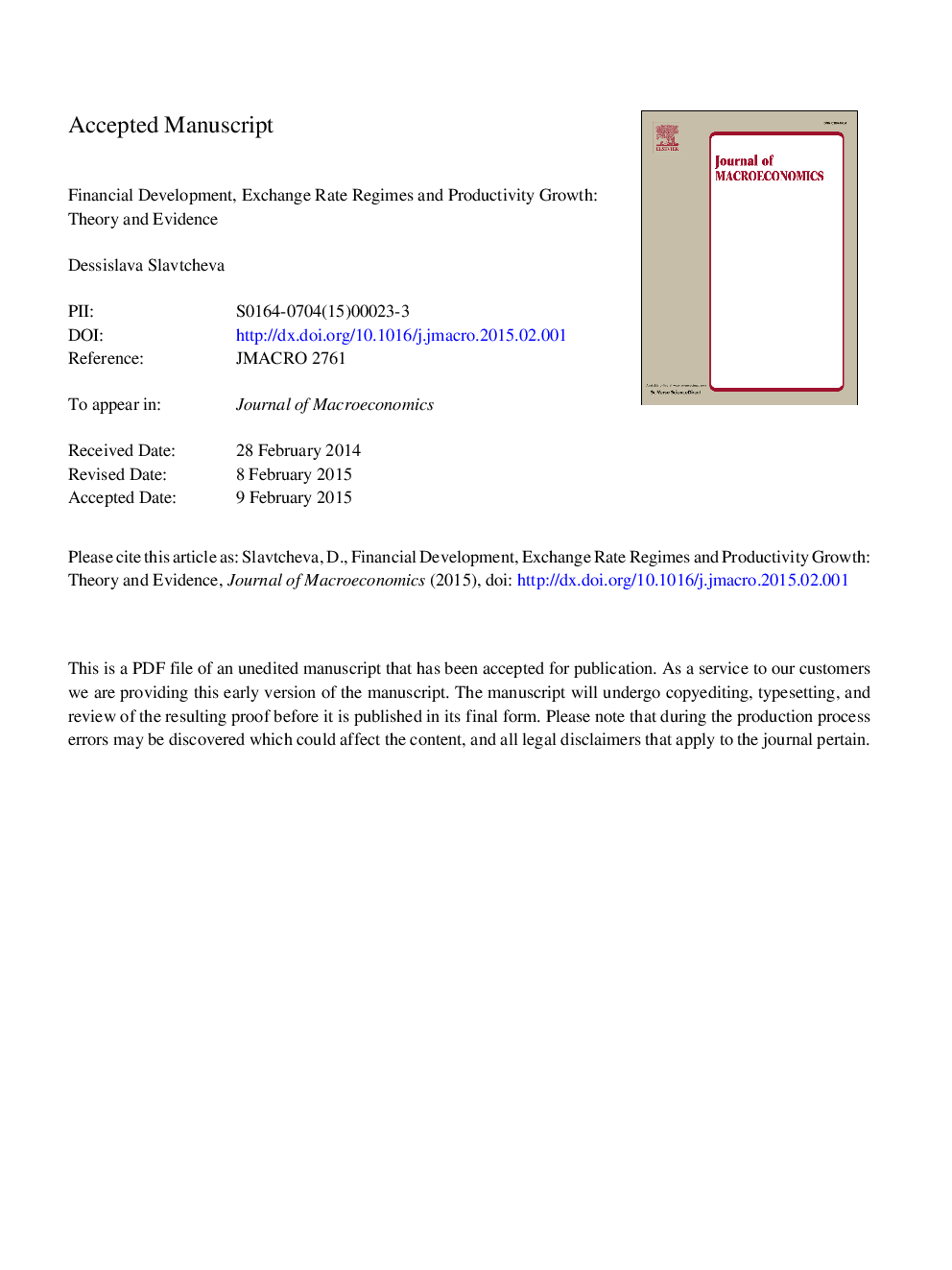| Article ID | Journal | Published Year | Pages | File Type |
|---|---|---|---|---|
| 7367093 | Journal of Macroeconomics | 2015 | 50 Pages |
Abstract
This paper provides a microfounded, quantitative model that rationalizes recent empirical evidence by Aghion et al. (2009), who find that fixed exchange rate regimes lead to higher long-run productivity growth in countries with low financial development, while the effect in financially developed countries is insignificant. The channel that explains this evidence in my model is the following: A fixed exchange rate regime leads to lower inflation when the money growth is otherwise high under flexible exchange rates. In turn, lower inflation results in higher long-run productivity growth since financial intermediaries hold a fraction of deposits as reserves, whose return is lower than the market rate and, thus, is affected by inflation. I show that the positive effect of fixed exchange rate regime on growth is larger for countries with lower levels of financial development because inflation and the fraction of deposits held as reserves are typically higher in these countries.
Related Topics
Social Sciences and Humanities
Economics, Econometrics and Finance
Economics and Econometrics
Authors
Dessislava Slavtcheva,
